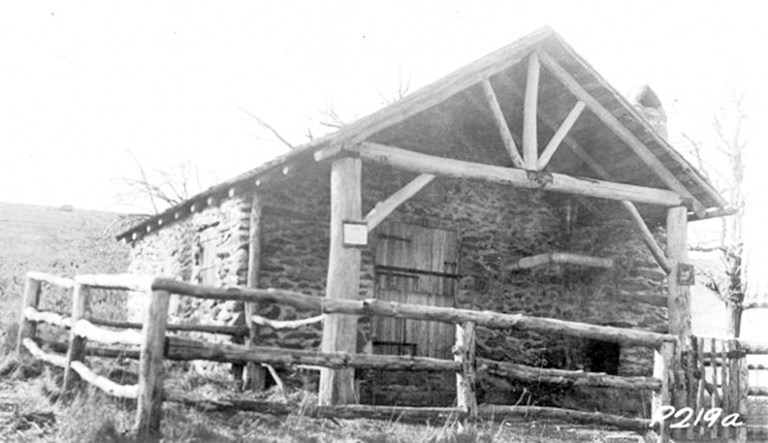Is It A Hut—Or A Shelter?

The use of these terms within Shenandoah National Park goes back to usage standards of the 1920s and 1930s, when they were first constructed.
At the time, a “hut” was a three-sided open facility that permitted overnight camping or bunking—this type of building is most often known as an “Adirondack”-style shelter these days, or simply a “shelter.” In the early 1900s, the term shelter was used for what we today call a “cabin.”
These were different from the homes of the mountaineers who were evicted from the Park, primarily because they were constructed for the purpose of providing longer term shelter for hikers (or trekkers, the term then used).
Shelter?
In addition to the trail huts, Shenandoah National Park boasts several picnic shelters, known as Byrd’s Nest shelters because these structures were endowed by funds donated by former Governor Harry F. Byrd, Sr. In the 1930s, the PATC also provided a cabin, known as Sexton Shelter, located on what was then known as Big Pass Mountain (today, we call it Mary’s Rock).
In any case, High Top Hut would be called High Top Shelter outside of the Park; it and its cousins are available for backpackers to use overnight subject to Park regulations.
 Hightop Hut
Hightop HutMaintenance Hut?
What crosses your mind when you first encounter the term, “maintenance hut?” This author thought of a maintenance shed, a place to store tools and parts and such. However, this is not the case in Shenandoah National Park.
In the late 1970s, the Park closed all trail huts due to abuse by vandals. After some time and sometimes painful negotiations, the Park re-opened some huts, but removed a few permanently. As a result of the negotiations between the Park, the Appalachian Trail Conference (now Conservancy), the NPS Appalachian Trail Project (now Park) Office, and PATC, one hut in each of the three administrative districts of the Park was set aside for the exclusive use by PATC trail overseers (maintainers) when working on their trail sections. The three Maintenance Huts are:
- Indian Run (North District)
- South River (Central District)
- Ivy Creek (South District)
An Aside (or Two)
PATC also agreed to be a Park concessionaire, responsible for maintaining all trail A.T. Huts within the Park. Coincident with this, PATC agreed to recruit volunteers who would camp by each Hut during the hiking “season” as unpaid “Hutkeepers.” The Club also agreed to charge a fee of $1.00 per night of each Hut user. That this arrangement did not work out was not a surprise; few were eager or willing to take a week or two of vacation time to act as chaperons for the Huts. At some point, the agreement was modified to release the Club from its Hutkeeping role. Still, the fee remained for some time; it became an “on-your-honor” thing, with hut users expected to deposit a dollar into a locked container.
None of this nonsense applied to the Byrd’s Nest picnic shelters.
 South Shenandoah
South Shenandoah